Check out these vetch images:
Crown vetch at Binder Park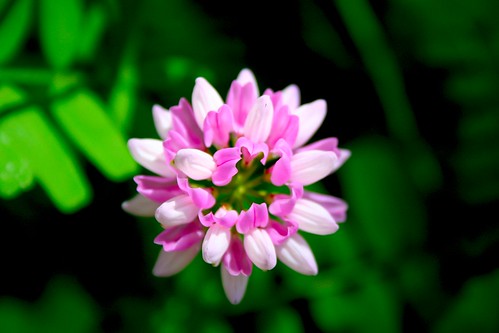
Image by JacobEnos
daisies and american vetch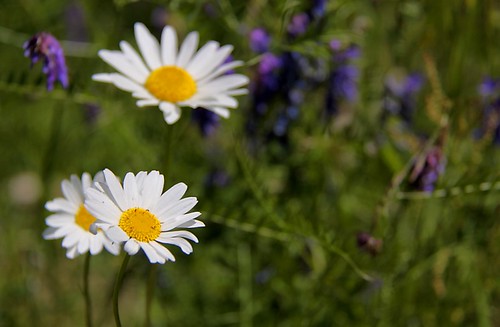
Image by waferboard
wildflowers on the Quibble Creek greenway, Surrey, BC. 120715-32
Check out these vetch images:
Crown vetch at Binder Park
Image by JacobEnos
daisies and american vetch
Image by waferboard
wildflowers on the Quibble Creek greenway, Surrey, BC. 120715-32
Some cool larkspur images:
Stairwell Sisters
Image by Michael Dougan
At the Lark Theater, Larkspur, California.
Waybacks at the Lark Theater
Image by Michael Dougan
Performing at the popular theater in Larkspur, California.
Some cool jessamine images:
山黃梔的花朵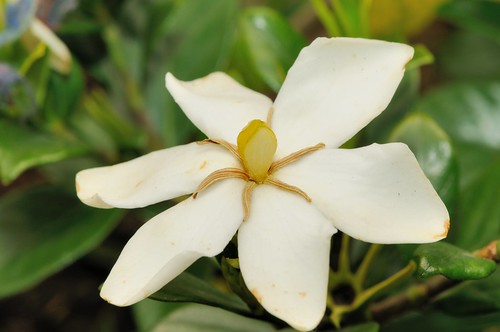
Image by 澎湖小雲雀
Taken Date: 2012:02:13 13:04:41
Make: NIKON CORPORATION
Model: NIKON D300S
FocalLength: 105.0 mm
F-Number: F 16
Exposure Time: 1/160 secs
ISO Speed: 200
重瓣大花梔子
Image by 澎湖小雲雀
Taken Date: 2012:05:05 15:37:51
Make: NIKON CORPORATION
Model: NIKON D300S
FocalLength: 105.0 mm
F-Number: F 32
Exposure Time: 1/60 secs
ISO Speed: 200
Check out these goldenrod images:
Y Goldenrod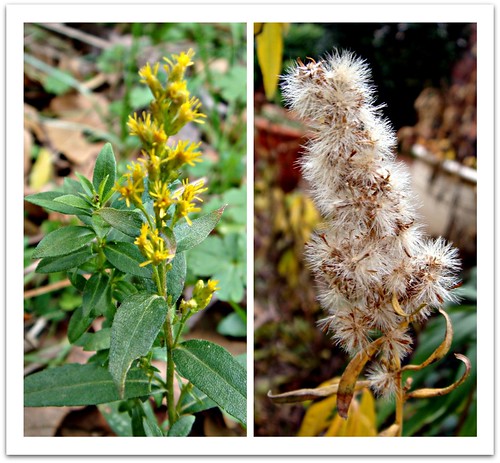
Image by CameliaTWU
In December in Texas
Little Goldenrod Flower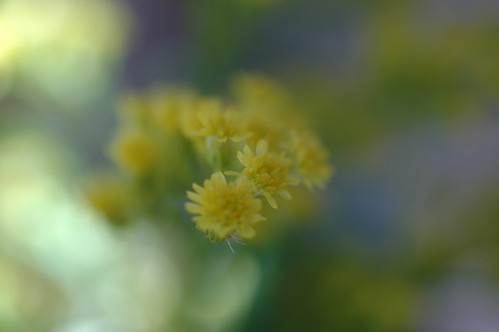
Image by **Mary**
Some cool bluebells images:
Bluebell 2012
Image by technoandrew
A few members of the Brickish Association/Southern Lego Train CLub took part in the Bluebell Railway's 1st ever model weekend, held 7th-8th July 2012, at Horsted Keynes and Sheffield Park. While there, I also got to photograph some of my Lego models with their real-life counterparts.
Bluebell 2012
Image by technoandrew
A few members of the Brickish Association/Southern Lego Train CLub took part in the Bluebell Railway's 1st ever model weekend, held 7th-8th July 2012, at Horsted Keynes and Sheffield Park. While there, I also got to photograph some of my Lego models with their real-life counterparts.
Bluebell 2012
Image by technoandrew
A few members of the Brickish Association/Southern Lego Train CLub took part in the Bluebell Railway's 1st ever model weekend, held 7th-8th July 2012, at Horsted Keynes and Sheffield Park. While there, I also got to photograph some of my Lego models with their real-life counterparts.
Check out these hawthorn images:
Hawthorn blossom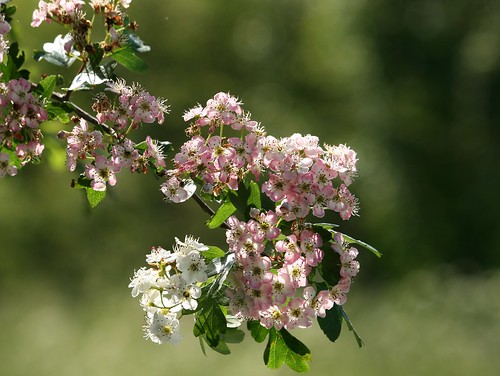
Image by Deanster1983
Photographed near Newton, Suffolk, England.
Hawthorn Blossom (Crataegus oxyacantha)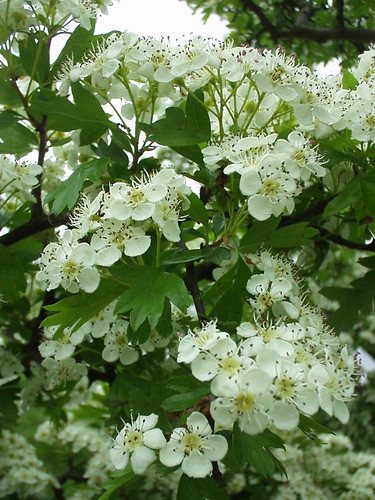
Image by pluralzed
Growing in an exposed spot high above Blake Dean, flowering later than down in the valley bottom
Check out these gerbera daisy images:
pink gerbera daisy
Image by Vanessa Pike-Russell
2007_0113_144454xx
pink gerbera daisy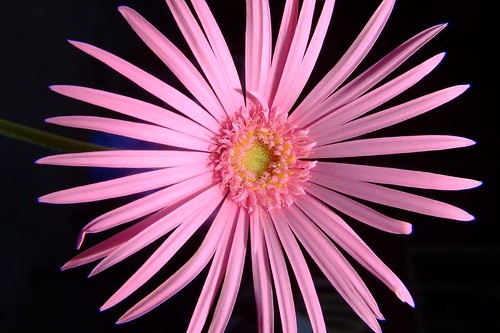
Image by Vanessa Pike-Russell
2007_0113_145154
Check out these floret images:
White Bells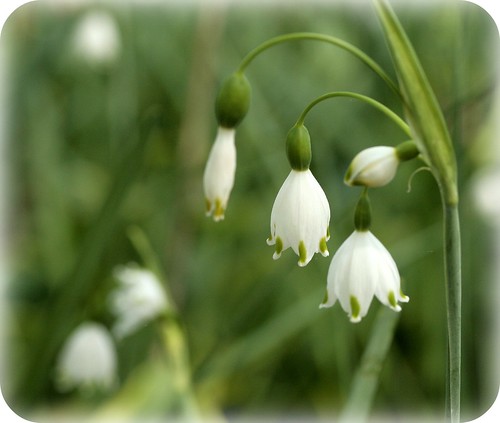
Image by Alicia Lynn
NY Botanical Garden 2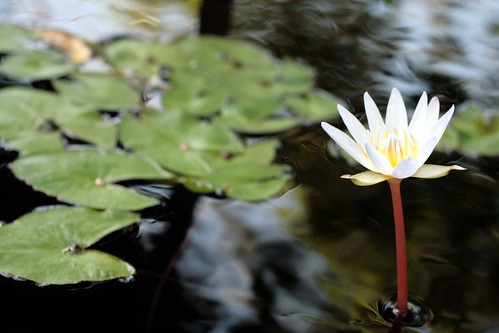
Image by Llima
One of the many flowers inside the Conservatory at the NY Botanical Garden in The Bronx.
Blüten im Hotelgarten
Image by Sporthotel Achental
Ein Bild aus dem Garten des Sporthotel Achental in Grassau im Chiemgau. Viele verschiedene Pflanzen, Blumen, Obstsorten, Kräuter, Bäume etc. finden sich rund um das Haus und bieten viele tolle Fotomotive zu jeder Jahreszeit. Natürlich kann im Garten auch super entspannen oder verschiedene sportliche oder teambuilding - Aktivitäten machen.
www.sporthotel-achental.com
Check out these bells of Ireland images:
Wonderful view of the Temple Church in North Dublin, Ireland, Beautiful restored to a glory with beauty and scenery in mind! 14/11/2009 - A place worship re-discovered! Enjoy!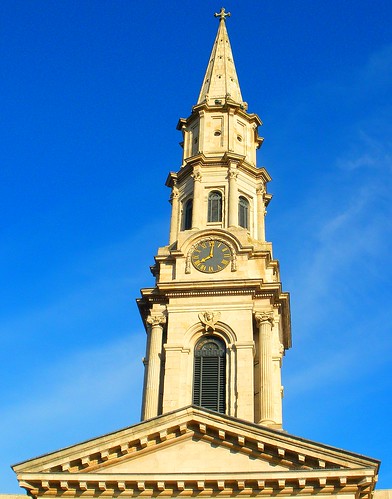
Image by || UggBoy♥UggGirl || PHOTO || WORLD || TRAVEL ||
The wonderful Temple church can be reached just 5 to 7 minutes walking distance to the north of the famous O'Connell Street in Dublin! Walk along to the north-side of Dublin and enjoy the georgian buildings along the way that lead to this most beautiful newly restored church in Dublin's north inner city! Enjoy! Dublin in November 2009 with the joy to see something new!
Wonderful view of the Temple Church in North Dublin, Ireland, Beautiful restored to a glory with beauty and scenery in mind! 14/11/2009 - A place worship re-discovered! Enjoy!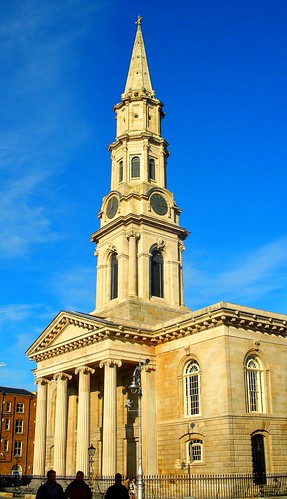
Image by || UggBoy♥UggGirl || PHOTO || WORLD || TRAVEL ||
The wonderful Temple church can be reached just 5 to 7 minutes walking distance to the north of the famous O'Connell Street in Dublin! Walk along to the north-side of Dublin and enjoy the georgian buildings along the way that lead to this most beautiful newly restored church in Dublin's north inner city! Enjoy! Dublin in November 2009 with the joy to see something new!
A few nice anemone images I found:
Sea anemones
Image by Freddie H.
Neist Point, Skye 20070622. There are a lot of sheep at Neist Point, as well as all kinds of sea birds. They books also promised us porpoises. Well, the seemed to have disguised themselves as sea anemones here.
Green Sea Anemone at the Oklahoma Aquarium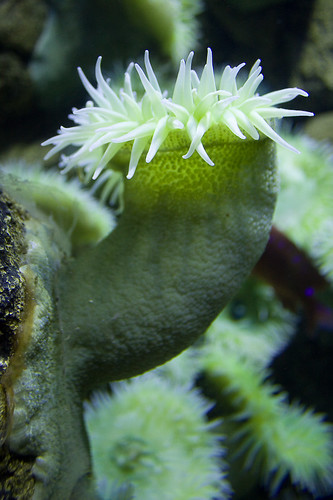
Image by BrettMorrison
Green Sea Anemone at the Oklahoma Aquarium in Jenks.
Orange Anemone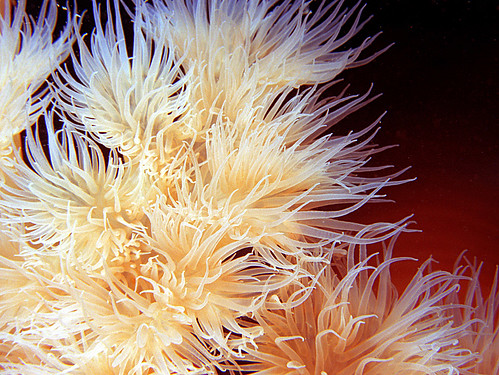
Image by icelight
The abundant compatriot, the orange sea anemone, is different pretty much only in color. Still gorgeous though.
Check out these apple blossom images:
apple blossom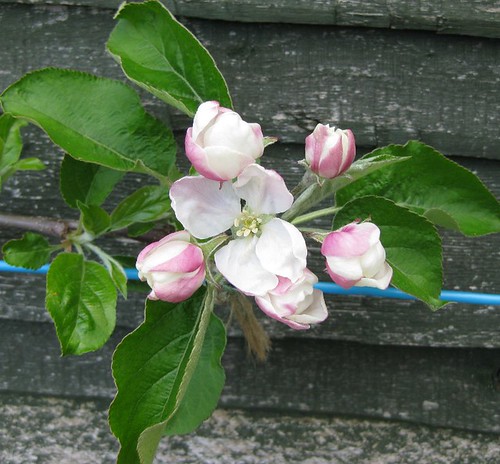
Image by eam31
On my scrumptious apple. First flower ever.
Apple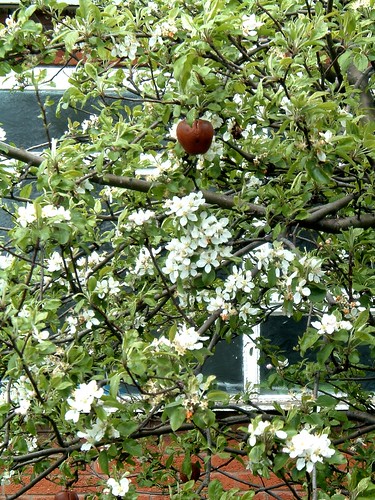
Image by scorzonera
Last year's apple with this year's blossom on a neglected apple tree.
floating blossoms
Image by uBookworm
A twig of apple blossoms on the water and the reflection of the tree which the twig fell from.
Some cool hawthorn images:
Hawthorn shieldbug (RL)
Image by davidshort
Acanthosoma haemorrhoidale - kněžovka stromová, ? final instar nymph.
Hawthorn Berries
Image by lovestruck.
Some cool dogwood images:
#3420 dogwood (ハナミズキ)
Image by Nemo's great uncle
• ハナミズキ[花水木](hanamizuki) = "dogwood" (Cornus florida)
↑ According to Wikipedia, these were introduced in 1915 in return for the cherry blossom trees now adorning the Tidal Basin in Washington DC.
#3419 dogwood (ハナミズキ)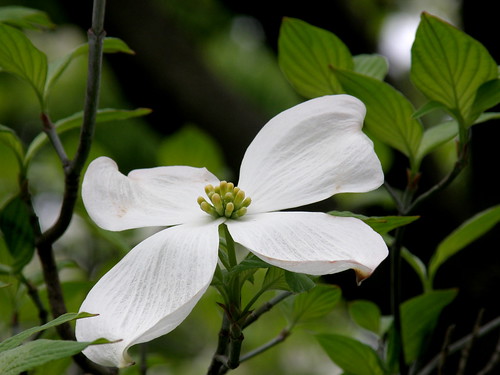
Image by Nemo's great uncle
• ハナミズキ[花水木](hanamizuki) = "dogwood" (Cornus florida)
↑ According to Wikipedia, these were introduced in 1915 in return for the cherry blossom trees now adorning the Tidal Basin in Washington DC.
B&W Dogwood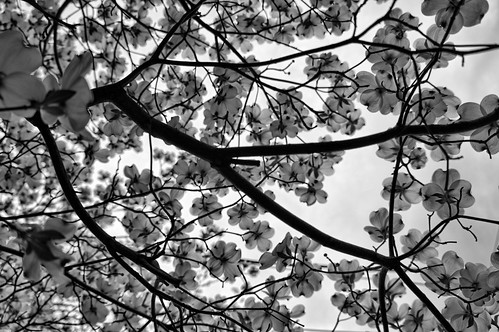
Image by Jacob.Caddy - my HD died lost everything!!
I thought this was a wonderful view of the dogwood. B&W conversion in Lightroom 4. For some reason the EXIF data was stripped Camera Sony NEX-5N
Some cool butterfly bush images:
Red Admiral Butterfly on Butterfly Bush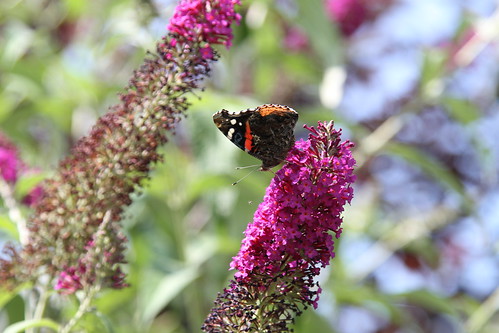
Image by Jim, the Photographer
Red Admiral Butterfly on Butterfly Bush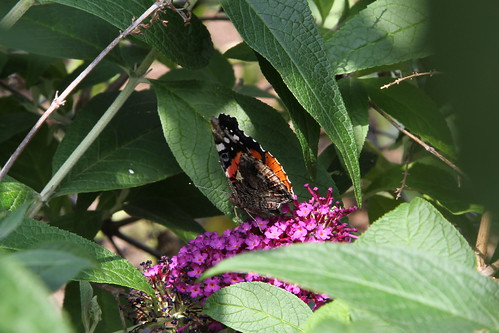
Image by Jim, the Photographer
A few nice Indian blanket images I found:
New Mex with the Ladies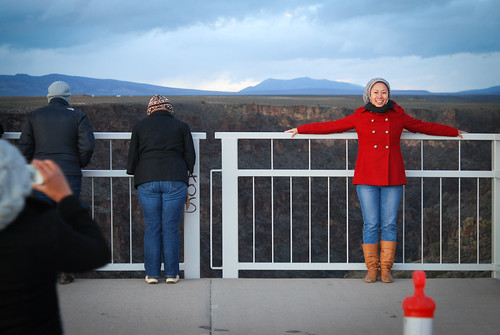
Image by bittermelon
Rio Grande Gorge Bridge. Me: "CAREFUL GIRLS CAREFUL!!!"
New Mex with the Ladies
Image by bittermelon
Our first night settling in at Casa Luna, Santa Fe. Thanks girls for letting me rest my weary sick head and getting me DayQuil.
Some cool azalea images:
Azalea Trail Maids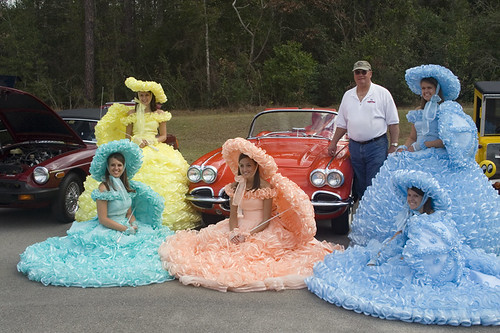
Image by FadderUri
cwd592: Outdoor Portrait Take advantage of natural light and take a portrait outdoors. No self-portraits
I'm assuming group portraits qualify. I went to the car show at my mother's church today, and there were some of the Azalea Trail Maids there. These lovely young ladies were kind enough to pose in front of this cool 'Vette whilst about a half dozen shutterbugs went to town.
April 15, 2009 - Azalea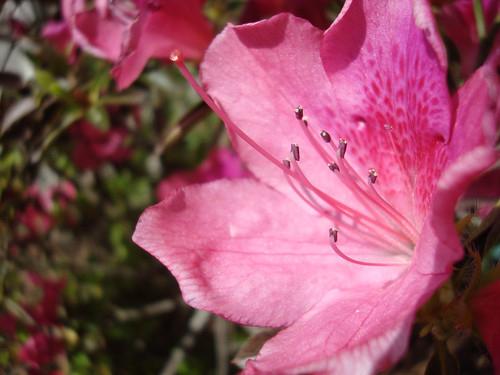
Image by Dennis from Atlanta
An azalea in our yard
Flaming Azalea
Image by nc_hiker
First flaming azalea tree I've seen this year.
Check out these black-eyed Susan images:
Black Eyed Susans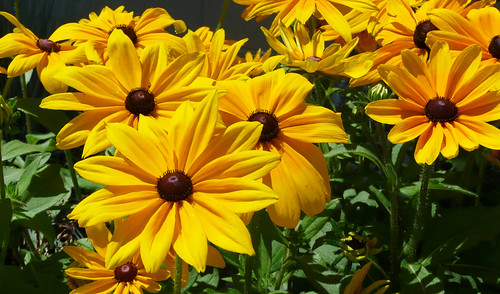
Image by IndigoValley
Bold and sassy flowers
MKL_1922-e
Image by mike loukides
Black-eyed Susans, Ithaca, NY
Black Eyed Susan Series 2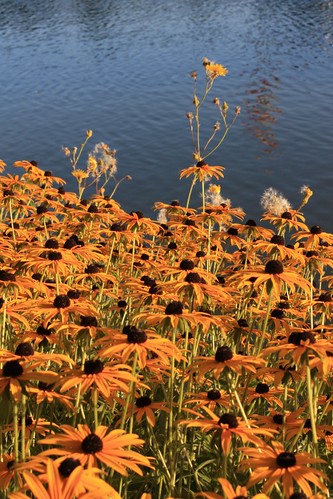
Image by Lisa Janes Photography
Taken on manual. The one who shon above the rest. That one Black Eyed Susan is standing above all the others. I wanted to make my focal point that particular flower.
A few nice sunflower images I found:
Sunflowers in the city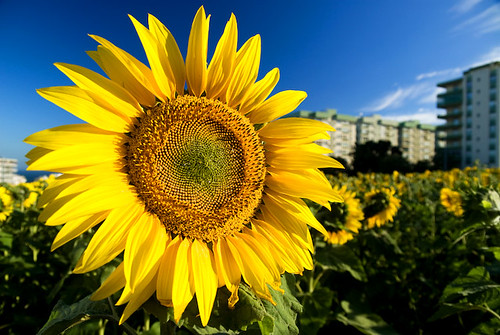
Image by Vitó
This was taken near where I live in Oeiras. There was an abandoned field with a lot of trash. They decided to substitute it with sunflowers which people appreciate very much.
See where the photo was taken at maps.yuan.cc/.
Wild Sunflowers On The Porch Chair In B&W
Image by Big Grey Mare
Sunflower Week continues...
Sunflower, Alabama 36581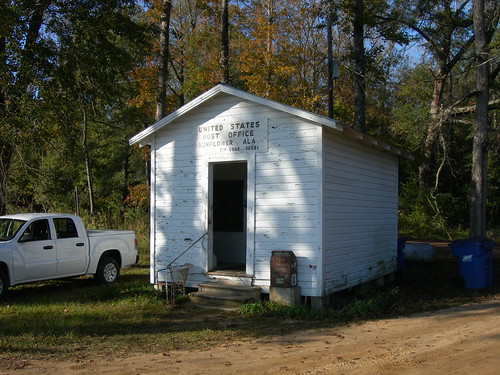
Image by jimmywayne
The clapboard building is somewhere around 120 years old. It is thought to have originally been a doctor's office back when Sunflower was a happening place on the railroad.
PO lobby:
www.flickr.com/photos/auvet/4118073213/in/photostream/
Check out these mountain laurel images:
Green Mountain Owls - Laurel 02
Image by AquaKnitter
Original Owl pattern made for a gaggle of nieces and nephews from Green Mountain Mohair by Green Mountain Spinnery.
Green Mountain Owls - Laurel 03
Image by AquaKnitter
Original Owl pattern made for a gaggle of nieces and nephews from Green Mountain Mohair by Green Mountain Spinnery.
Some cool magnolia images:
Southern Magnolia, Bullbay, Magnolia grandiflora ....#6
Image by Vietnam Plants & America plants
Taken on May 28, 2012 in Waco city, Texas state, Southern of America .
Vietnamese named : Hoa Mộc Lan
Common names : Southern Magnolia, Bullbay.
Scientist name : Magnolia grandiflora L
Synonyms :
Family : Magnoliaceae- Magnolia family. Họ Mộc Lan
Kingdom: Plantae – Plants
Subkingdom: Tracheobionta – Vascular plants
Superdivision: Spermatophyta – Seed plants
Division: Magnoliophyta – Flowering plants
Class: Magnoliopsida – Dicotyledons
Subclass: Magnoliidae
Order: Magnoliales
Family: Magnoliaceae – Magnolia family
Genus: Magnolia L. – magnolia
Species: Magnolia grandiflora L. – southern magnolia
**** plants.usda.gov/java/profile?symbol=magr4
**** en.wikipedia.org/wiki/Magnolia_grandiflora
Magnolia grandiflora, commonly known as the southern magnolia or bull bay, is a tree of the family Magnoliaceae native to the southeastern United States, from Virginia south to central Florida, and west to eastern Texas and Oklahoma. Reaching 27.5 m (90 ft) in height, it is a large striking evergreen tree with large dark green leaves and large white fragrant flowers. Widely cultivated around the world, over a hundred cultivars have been bred and marketed commercially. The timber is hard and heavy, and has been used commercially to make furniture, pallets, and veneer.
Description
Magnolia grandiflora is a medium to large evergreen tree which may grow 27.5 m (90 ft) tall.[1] It typically has a single stem (or trunk) and a pyramidal shape.[2] The leaves are simple and broadly ovate, 12–20 cm (5–8 in) long and 6–12 cm (2–5 in) broad,[2] with smooth margins. They are dark green, stiff and leathery, and often scurfy underneath with yellow-brown pubescence. The large, showy, lemon citronella-scented flowers are white, up to 30 cm (12 in) across and fragrant, with 6–12 petals with a waxy texture, emerging from the tips of twigs on mature trees in late spring. Flowering is followed by the rose-coloured fruit, ovoid and 7.5–10 cm (3–4 in) long and 3–5 cm (1.5–2 in) wide.[3]
Exceptionally large trees recorded include a 35 m (114 ft) high specimen from the Chickasawhay District, De Soto National Forest in Mississippi which measured 17 feet 8 inches in circumference at breast height, from 1961, and a 30 m (99 ft) tall tree from Baton Rouge in Louisiana which reached 18 feet in circumference at breast height
Taxonomy
Magnolia grandiflora was one of the many species first described by Linnaeus in his Systema Naturae in 1759, basing his description on the earlier notes of Miller. He did not select a type specimen. Its specific epithet is derived from the Latin words grandis "big", and flor- "flower".[4]
Magnolia grandiflora is most commonly known as Southern magnolia, a name derived from its range in the Southern United States. Many broadleaved evergreen trees are known as bays for their resemblance to the leaves of the red bay (Persea borbonia), with this species known as the bull bay for its huge size or alternately because cattle have been reported eating its leaves. Laurel magnolia,[4] evergreen magnolia,[3] large-flower magnolia or big laurel are alternate names.[5] The timber is known simply as magn
Distribution and habitat
Magnolia grandiflora is native to the southeastern United States, from Virginia south to central Florida, and then west to eastern Texas and Oklahoma. It is found on the edges of bodies of water and swamps, in association with sweetgum (Liquidambar styraciflua), water oak (Quercus nigra), and black tupelo (Nyssa sylvatica). In more sheltered habitats, it grows as a large tree, but can be a low shrub when found on coastal dunes.[6] It is killed by summer fires, and is missing from habitats that undergo regular burning.[7] In Florida it is found in a number of different ecological areas that are typically shady and have well draining soils, it is also found in hummocks, along ravines, on slopes, and wooded floodplains.[8] Despite preferring sites with increased moisture, it does not tolerate inundation.[3] It grows on sand-hills in maritime forests, where it is found growing with live oaks and saw palmetto.[7] In the eastern United States it has become an escape, and has become naturalized in the tidewater area of Virginia and locally in other areas outside of its historically natural range
Ecology
Magnolia grandiflora can produce seed by 10 years of age, although peak seed production is achieved closer to 25 years of age. Around 50% of seed can germinate, and is spread by birds and mammals.[3] Squirrels, opossums, quail, and turkey are known to eat the seeds
Cultivation and uses
The plant collector Mark Catesby, the first in North America, brought Magnolia grandiflora to Britain in 1726, where it entered cultivation and overshadowed M. virginiana which had been collected a few years earlier. It had also come to France, the French having collected it in the vicinity of the Mississippi River in Louisiana.[11] It was glowingly described by Philip Miller in his 1731 work The Gardeners' Dictionary.[12] One of the earliest people to cultivate it in Europe was Sir John Colliton of Exeter in Devon; scaffolding and tubs surrounded his tree, where gardeners propagated its branches by layering, the daughter plants initially selling for five guineas each (but later falling to half a guinea).[12]
Southern magnolia is a very popular ornamental tree throughout the southeastern United States and California, grown for its attractive shiny green leaves and fragrant flowers. It is also grown in Central and South America as well as parts of Asia.[4]
It is often planted in university campuses and allowed to grow into a large tree, either with dependent branches, or with the lower branches removed to display the bare trunks. It is also espaliered against walls, which improves its frost-hardiness.[4]
On the east coast of the United States, cold-hardy cultivars have been seen planted up to and even north of the Ohio River, where large tree specimens become increasingly rare and eventually are only found as shrubs before disappearing altogether from the landscape; for example, large mature trees are common in the Cincinnati, Ohio area but begin to taper off in size and occurrence until they are generally absent altogether in Columbus, Ohio. This "subtropical indicator" tree is seen in some gardens as far north as southern Connecticut, southeastern New York and Cape Cod; farther north in New England it is extremely difficult to cultivate. Towards the northern limit of its cultivation, it may suffer dieback from very hard freezes, but weathers normal freezes well.
On the west coast it can be grown as far north as British Columbia.[4]
It is recommended for seashore plantings in areas that are windy but have little salt spray.[13] The foliage will bronze, blotch, and burn in severe winters at the northern limits of cultivation, especially when grown in full winter sun[14] but most leaves remain until they are replaced by new foliage in the spring. In climates where the ground freezes, winter sun appears to do more damage than the cold itself. In the northern hemisphere the south side of the tree will experience more leaf damage than the north side of the tree. Two extremes are known, with leaves white underneath and with leaves brown underneath. The brown varieties are claimed to be more cold-hardy than the white varieties, but this does not appear to be proven as yet. Once established plants are drought tolerant, and the most drought tolerant of all the Magnolia species.[14]
The leaves are heavy and tend to fall year round from the interior of the crown and form a dense cover on top of the soil surface,[14] they have been used in decorative floral arrangements.[15] The leaves have a waxy coating that makes them resistant to damage from salt and air pollution.[14]
In the United States, Southern magnolia along with sweetbay (Magnolia virginiana) and cucumbertree (Magnolia acuminata), is commercially harvested. Lumber from all three species is simply called magnolia, which is used in the construction of furniture, boxes, pallets, venetian blinds, sashes, doors and used as veneers. Southern magnolia has yellowish-white sapwood and light to dark brown heartwood that is tinted yellow or green. The usually straight grained wood has uniform texture with closely spaced rings. The wood is ranked moderate in heaviness, hardness and stiffness; moderately low in shrinkage, bending and compression strength; it is ranked moderately high in shock resistance.[16] Its use in the southeastern United States has been supplanted by the availability of harder woods.[17]
Symbolic of the American South, Magnolia grandiflora is the state tree of Mississippi,[18] and the state flower of Mississippi and Louisiana.[6] The flower was also used as an emblem of the Confederate army in the US civil war
Cultivars
Over a hundred cultivars have been developed and named in Europe and North America. More and more plants in nurseries are propagated by cuttings, resulting in more consistent form in the various varieties available.[19] Many older cultivars have been superseded by newer ones and are no longer available.[20]
As newer cultivars have been found to be more cold hardy, the cultivated range has continued to spread farther north with some being planted around Chicago. 'Bracken's Brown Beauty', 'Edith Bogue' and '24 Below' are some of the most cold hardy varieties.
Magnolia "Angustifolia", developed in France in 1825, has narrow spear-shaped leaves 20 cm (8 in) long by 11 cm (4.4 in) wide, as its name suggests.[19]
Magnolia "Exmouth" was developed in the early 18th century by John Colliton in Devon. It is notable for its huge flowers with up to 20 tepals, and vigorous growth. Erect in habit, it is often planted against walls. The leaves are green above and brownish underneath.[21] The flowers are very fragrant and the leaves are narrow and leathery.[22]
Magnolia "Goliath", was developed by Caledonia Nurseries of Guernsey, and has a bushier habit and globular flowers of up to 30 cm (12 in) diameter. Long-flowering, it has oval leaves which lack the brownish hair underneath.[21]
Magnolia "Little Gem", a dwarf cultivar, is grown in warmer climates. Originally developed in 1952 by Steed's Nursery in Candor, North Carolina, it is a slower growing form with a columnar shape which reaches around 4.25 m (14 ft) high and 1.2 m (4 ft) wide. Flowering heavily over an extended period in warmer climate, it bears medium-size cup-shaped flowers, and has elliptic leaves 12.5 cm (5 in) long by 5 cm (2 in) wide
Other commonly grow cultivars include:
Magnolia "Ferruginea", has dark green leaves with rust-brown undersides
**** www.pfaf.org/user/Plant.aspx?LatinName=Magnolia+grandiflora : Click on link to read more , please.
Edible Uses
Edible Parts: Flowers.
Edible Uses: Condiment.
The flowers are pickled in some parts of England and are considered to have an exquisite flavour[2, 183]. They are also said to be used as a spice and a condiment[183].
Medicinal Uses
Plants For A Future can not take any responsibility for any adverse effects from the use of plants. Always seek advice from a professional before using a plant medicinally.
Diaphoretic; Hypotensive; Salve; Stimulant; Tonic.
The bark is diaphoretic, stimulant, tonic[46, 61, 240]. It is used in the treatment of malaria and rheumatism[240]. A decoction has been used as a wash and a bath for prickly heat itching[257]. The decoction has also been used as a wash for sores and as a steam bath for treating dropsy[257]. An alcoholic extract of the plant reduces the blood pressure, produces a slight acceleration in respiration but has no action on the heart[240].
Other Uses
Essential; Shelterbelt; Wood.
A fairly wind-tolerant tree, it can be used in shelterbelt plantings[200]. An essential oil is obtained from the flowers[240]. Wood - hard and fairly heavy, but weak and not durable[227]. White when first cut, it turns brown on exposure to air[229]. It is used in limited amounts for fuel, baskets, crates, woodenware and furniture[82, 227]
Propagation
Seed - best sown as soon as it is ripe in a cold frame. Stored seed must be kept cold over the winter and should be sown in late winter in a cold frame[200]. The seed usually germinates in the spring but it can take 18 months. Prick out the seedlings into individual pots when they are large enough to handle and grow them on in light shade in a cold frame or greenhouse for at least their first winter. They can be planted out into their permanent positions when they are more than 15cm tall, though should be well mulched and given some protection from winter cold for their first winter or two outdoors. Layering in early spring[200].
Southern Magnolia, Bullbay, Magnolia grandiflora ....#13
Image by Vietnam Plants & America plants
Taken on May 28, 2012 in Waco city, Texas state, Southern of America .
Vietnamese named : Hoa Mộc Lan
Common names : Southern Magnolia, Bullbay.
Scientist name : Magnolia grandiflora L
Synonyms :
Family : Magnoliaceae- Magnolia family. Họ Mộc Lan
Kingdom: Plantae – Plants
Subkingdom: Tracheobionta – Vascular plants
Superdivision: Spermatophyta – Seed plants
Division: Magnoliophyta – Flowering plants
Class: Magnoliopsida – Dicotyledons
Subclass: Magnoliidae
Order: Magnoliales
Family: Magnoliaceae – Magnolia family
Genus: Magnolia L. – magnolia
Species: Magnolia grandiflora L. – southern magnolia
**** plants.usda.gov/java/profile?symbol=magr4
**** en.wikipedia.org/wiki/Magnolia_grandiflora
Magnolia grandiflora, commonly known as the southern magnolia or bull bay, is a tree of the family Magnoliaceae native to the southeastern United States, from Virginia south to central Florida, and west to eastern Texas and Oklahoma. Reaching 27.5 m (90 ft) in height, it is a large striking evergreen tree with large dark green leaves and large white fragrant flowers. Widely cultivated around the world, over a hundred cultivars have been bred and marketed commercially. The timber is hard and heavy, and has been used commercially to make furniture, pallets, and veneer.
Description
Magnolia grandiflora is a medium to large evergreen tree which may grow 27.5 m (90 ft) tall.[1] It typically has a single stem (or trunk) and a pyramidal shape.[2] The leaves are simple and broadly ovate, 12–20 cm (5–8 in) long and 6–12 cm (2–5 in) broad,[2] with smooth margins. They are dark green, stiff and leathery, and often scurfy underneath with yellow-brown pubescence. The large, showy, lemon citronella-scented flowers are white, up to 30 cm (12 in) across and fragrant, with 6–12 petals with a waxy texture, emerging from the tips of twigs on mature trees in late spring. Flowering is followed by the rose-coloured fruit, ovoid and 7.5–10 cm (3–4 in) long and 3–5 cm (1.5–2 in) wide.[3]
Exceptionally large trees recorded include a 35 m (114 ft) high specimen from the Chickasawhay District, De Soto National Forest in Mississippi which measured 17 feet 8 inches in circumference at breast height, from 1961, and a 30 m (99 ft) tall tree from Baton Rouge in Louisiana which reached 18 feet in circumference at breast height
Taxonomy
Magnolia grandiflora was one of the many species first described by Linnaeus in his Systema Naturae in 1759, basing his description on the earlier notes of Miller. He did not select a type specimen. Its specific epithet is derived from the Latin words grandis "big", and flor- "flower".[4]
Magnolia grandiflora is most commonly known as Southern magnolia, a name derived from its range in the Southern United States. Many broadleaved evergreen trees are known as bays for their resemblance to the leaves of the red bay (Persea borbonia), with this species known as the bull bay for its huge size or alternately because cattle have been reported eating its leaves. Laurel magnolia,[4] evergreen magnolia,[3] large-flower magnolia or big laurel are alternate names.[5] The timber is known simply as magn
Distribution and habitat
Magnolia grandiflora is native to the southeastern United States, from Virginia south to central Florida, and then west to eastern Texas and Oklahoma. It is found on the edges of bodies of water and swamps, in association with sweetgum (Liquidambar styraciflua), water oak (Quercus nigra), and black tupelo (Nyssa sylvatica). In more sheltered habitats, it grows as a large tree, but can be a low shrub when found on coastal dunes.[6] It is killed by summer fires, and is missing from habitats that undergo regular burning.[7] In Florida it is found in a number of different ecological areas that are typically shady and have well draining soils, it is also found in hummocks, along ravines, on slopes, and wooded floodplains.[8] Despite preferring sites with increased moisture, it does not tolerate inundation.[3] It grows on sand-hills in maritime forests, where it is found growing with live oaks and saw palmetto.[7] In the eastern United States it has become an escape, and has become naturalized in the tidewater area of Virginia and locally in other areas outside of its historically natural range
Ecology
Magnolia grandiflora can produce seed by 10 years of age, although peak seed production is achieved closer to 25 years of age. Around 50% of seed can germinate, and is spread by birds and mammals.[3] Squirrels, opossums, quail, and turkey are known to eat the seeds
Cultivation and uses
The plant collector Mark Catesby, the first in North America, brought Magnolia grandiflora to Britain in 1726, where it entered cultivation and overshadowed M. virginiana which had been collected a few years earlier. It had also come to France, the French having collected it in the vicinity of the Mississippi River in Louisiana.[11] It was glowingly described by Philip Miller in his 1731 work The Gardeners' Dictionary.[12] One of the earliest people to cultivate it in Europe was Sir John Colliton of Exeter in Devon; scaffolding and tubs surrounded his tree, where gardeners propagated its branches by layering, the daughter plants initially selling for five guineas each (but later falling to half a guinea).[12]
Southern magnolia is a very popular ornamental tree throughout the southeastern United States and California, grown for its attractive shiny green leaves and fragrant flowers. It is also grown in Central and South America as well as parts of Asia.[4]
It is often planted in university campuses and allowed to grow into a large tree, either with dependent branches, or with the lower branches removed to display the bare trunks. It is also espaliered against walls, which improves its frost-hardiness.[4]
On the east coast of the United States, cold-hardy cultivars have been seen planted up to and even north of the Ohio River, where large tree specimens become increasingly rare and eventually are only found as shrubs before disappearing altogether from the landscape; for example, large mature trees are common in the Cincinnati, Ohio area but begin to taper off in size and occurrence until they are generally absent altogether in Columbus, Ohio. This "subtropical indicator" tree is seen in some gardens as far north as southern Connecticut, southeastern New York and Cape Cod; farther north in New England it is extremely difficult to cultivate. Towards the northern limit of its cultivation, it may suffer dieback from very hard freezes, but weathers normal freezes well.
On the west coast it can be grown as far north as British Columbia.[4]
It is recommended for seashore plantings in areas that are windy but have little salt spray.[13] The foliage will bronze, blotch, and burn in severe winters at the northern limits of cultivation, especially when grown in full winter sun[14] but most leaves remain until they are replaced by new foliage in the spring. In climates where the ground freezes, winter sun appears to do more damage than the cold itself. In the northern hemisphere the south side of the tree will experience more leaf damage than the north side of the tree. Two extremes are known, with leaves white underneath and with leaves brown underneath. The brown varieties are claimed to be more cold-hardy than the white varieties, but this does not appear to be proven as yet. Once established plants are drought tolerant, and the most drought tolerant of all the Magnolia species.[14]
The leaves are heavy and tend to fall year round from the interior of the crown and form a dense cover on top of the soil surface,[14] they have been used in decorative floral arrangements.[15] The leaves have a waxy coating that makes them resistant to damage from salt and air pollution.[14]
In the United States, Southern magnolia along with sweetbay (Magnolia virginiana) and cucumbertree (Magnolia acuminata), is commercially harvested. Lumber from all three species is simply called magnolia, which is used in the construction of furniture, boxes, pallets, venetian blinds, sashes, doors and used as veneers. Southern magnolia has yellowish-white sapwood and light to dark brown heartwood that is tinted yellow or green. The usually straight grained wood has uniform texture with closely spaced rings. The wood is ranked moderate in heaviness, hardness and stiffness; moderately low in shrinkage, bending and compression strength; it is ranked moderately high in shock resistance.[16] Its use in the southeastern United States has been supplanted by the availability of harder woods.[17]
Symbolic of the American South, Magnolia grandiflora is the state tree of Mississippi,[18] and the state flower of Mississippi and Louisiana.[6] The flower was also used as an emblem of the Confederate army in the US civil war
Cultivars
Over a hundred cultivars have been developed and named in Europe and North America. More and more plants in nurseries are propagated by cuttings, resulting in more consistent form in the various varieties available.[19] Many older cultivars have been superseded by newer ones and are no longer available.[20]
As newer cultivars have been found to be more cold hardy, the cultivated range has continued to spread farther north with some being planted around Chicago. 'Bracken's Brown Beauty', 'Edith Bogue' and '24 Below' are some of the most cold hardy varieties.
Magnolia "Angustifolia", developed in France in 1825, has narrow spear-shaped leaves 20 cm (8 in) long by 11 cm (4.4 in) wide, as its name suggests.[19]
Magnolia "Exmouth" was developed in the early 18th century by John Colliton in Devon. It is notable for its huge flowers with up to 20 tepals, and vigorous growth. Erect in habit, it is often planted against walls. The leaves are green above and brownish underneath.[21] The flowers are very fragrant and the leaves are narrow and leathery.[22]
Magnolia "Goliath", was developed by Caledonia Nurseries of Guernsey, and has a bushier habit and globular flowers of up to 30 cm (12 in) diameter. Long-flowering, it has oval leaves which lack the brownish hair underneath.[21]
Magnolia "Little Gem", a dwarf cultivar, is grown in warmer climates. Originally developed in 1952 by Steed's Nursery in Candor, North Carolina, it is a slower growing form with a columnar shape which reaches around 4.25 m (14 ft) high and 1.2 m (4 ft) wide. Flowering heavily over an extended period in warmer climate, it bears medium-size cup-shaped flowers, and has elliptic leaves 12.5 cm (5 in) long by 5 cm (2 in) wide
Other commonly grow cultivars include:
Magnolia "Ferruginea", has dark green leaves with rust-brown undersides
**** www.pfaf.org/user/Plant.aspx?LatinName=Magnolia+grandiflora : Click on link to read more , please.
Edible Uses
Edible Parts: Flowers.
Edible Uses: Condiment.
The flowers are pickled in some parts of England and are considered to have an exquisite flavour[2, 183]. They are also said to be used as a spice and a condiment[183].
Medicinal Uses
Plants For A Future can not take any responsibility for any adverse effects from the use of plants. Always seek advice from a professional before using a plant medicinally.
Diaphoretic; Hypotensive; Salve; Stimulant; Tonic.
The bark is diaphoretic, stimulant, tonic[46, 61, 240]. It is used in the treatment of malaria and rheumatism[240]. A decoction has been used as a wash and a bath for prickly heat itching[257]. The decoction has also been used as a wash for sores and as a steam bath for treating dropsy[257]. An alcoholic extract of the plant reduces the blood pressure, produces a slight acceleration in respiration but has no action on the heart[240].
Other Uses
Essential; Shelterbelt; Wood.
A fairly wind-tolerant tree, it can be used in shelterbelt plantings[200]. An essential oil is obtained from the flowers[240]. Wood - hard and fairly heavy, but weak and not durable[227]. White when first cut, it turns brown on exposure to air[229]. It is used in limited amounts for fuel, baskets, crates, woodenware and furniture[82, 227]
Propagation
Seed - best sown as soon as it is ripe in a cold frame. Stored seed must be kept cold over the winter and should be sown in late winter in a cold frame[200]. The seed usually germinates in the spring but it can take 18 months. Prick out the seedlings into individual pots when they are large enough to handle and grow them on in light shade in a cold frame or greenhouse for at least their first winter. They can be planted out into their permanent positions when they are more than 15cm tall, though should be well mulched and given some protection from winter cold for their first winter or two outdoors. Layering in early spring[200].
Along Magnolia Way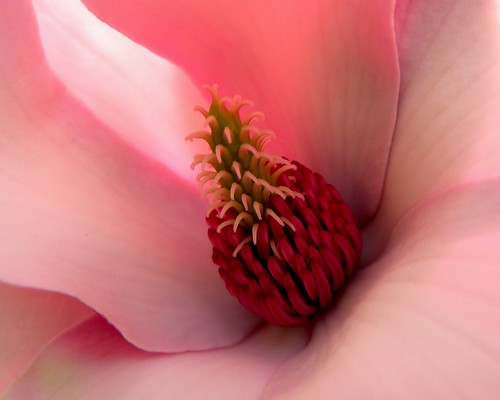
Image by Eddie C3
Ah Magnolia, that species that places more energy into spring beauty than any other northeaster tree. She is one of the elders of the angiosperms, developed long before the more efficient species of tree with their sweet smells and small composites. The big showy flowers that come down to eye level are so beautiful that it is hard to remember that these flowers are not designed for humans.
Identified mostly as a southern tree, there is one place in the Bronx where I am very fond of viewing magnolias in the spring. It is a back road of the New York Botanical Garden. The view was designed for people to view magnolias from cars. Now that cars are banned from the NYBG some take in the view while riding in a tram. This back road is seldom noticed during most of the year and almost nobody can bee seen on foot at Magnolia Way but when the magnolias are in bloom people from all over show up at the quiet little back road between the Bronx River and the Children’s Garden. All of that white and pink is an amazing view, if you time it right.